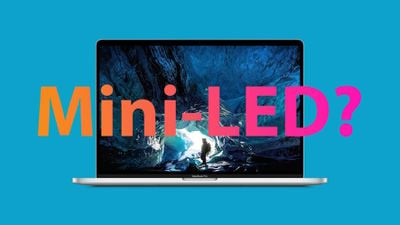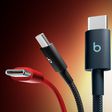Increased competition among Apple's suppliers for mini-LED display chips will accelerate the company's adoption of the advanced technology in its iPad and MacBook lineups, according to a new research note from analyst Ming-Chi Kuo seen by MacRumors.

Kuo says that while Epistar had been predicted to be the exclusive supplier of mini-LED chips for Apple products in 2021, Sanan Optoelectronics has experienced better than expected development on the technology and will also begin supplying Apple in 2021 rather than the previously estimated timeframe of 2022.
The increased supply capacity and competition among suppliers will reportedly drive Apple's cost for mini-LED display dies from $75–$85 down to around $45. As a result, Kuo expects that mini-LED technology will appear in roughly 30–40% of iPad shipments and 20–30% of MacBook shipments in 2021, up from previous estimates of 10–20% shipment share for both product lines.
Although Epistar has met Apple's mass production requirements, we believe that Apple continues to look for new suppliers in order to reduce supply risks and costs. Among the second supplier candidates, Sanan Optoelectronics' development schedule and cost are superior to competitors (including Osram and Seoul Semiconductor). We predict that Sanan Optoelectronics will have 20–30% and 45–55% of Apple’s mini LED market share in 2021 and 2022, respectively (vs. our previous estimates of 0% and 10–20%), plus non-Apple. The demand for mini LEDs in China has grown, so we believe that Sanan Optoelectronics will significantly benefit from the mini LED business in the next 3-5 years.
Apple has been rumored for some time to be looking to introduce mini-LED display technology to its iPad Pro and Mac notebook lineups, and Kuo said roughly six months ago that Apple has six mini-LED products in its pipeline planned to launch though the end of 2021. The products include a 12.9-inch iPad Pro, a 27-inch iMac Pro, a 14.1-inch MacBook Pro, a 16-inch MacBook Pro, a 10.2.-inch iPad, and a 7.9-inch iPad mini.
As we've outlined in our guide on mini-LED technology, the displays use on the order of 1,000 to 10,000 individual LEDs that offer a number of improvements over traditional LED-backlit displays, coming close to performance of OLED displays without some of the drawbacks of that technology.
Mini-LED displays can offer deeper, darker blacks, brighter brights, richer colors, and better contrast compared to traditional LED-based displays, though the technology comes at a significant increase in cost for the time being.























